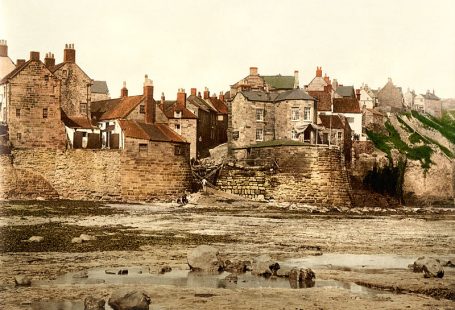Upon recently visiting the Roman amphitheatre at Arles, I marvelled at the scale of the building, and Roman engineering skills.
Picture taken of Arles amphitheatre – Image © Edmund MB King
During the visit, we came across a notice board: ‘Principaux amphitheatres du monde romain’, which shows a list of dimensions for each one. Arles is number twelve on the list, out of twenty-one. I was intrigued that Pouzzoles ( Pozzuoli/ Puteoli) was even larger than the colosseum in Rome.
As the wiki articles on these amphitheatres states:
‘The elliptical structure [at Pozzuoli] measures 147 x 117 meters (482 x 384 feet), with the arena floor measuring 72.22 x 42.33 meters (237 x 139 feet)’.
‘Capua is one of the largest in existence; the longer diameter is 170 m (185 yd), the shorter 140 m (152 yd), and the arena measures 75 by 45 m (83 by 49 yd)’.
‘[The Colosseum] is elliptical in plan and is 189 meters (615 ft / 640 Roman feet) long, and 156 meters (510 ft / 528 Roman feet) wide, with a base area of 6 acres (24,000 m)’.
The measurements on this list at Arles, for the Rome Colosseum and for Capua are substantiated by measurements cited today. However, the measurement for Pozzuoli appears to be incorrect.
Picture taken of Arles amphitheatre – Image © Edmund MB King
Accounts of Roman amphitheatres appeared early in UK newspapers.
Rome Colosseum
The obvious size and presence of the colosseum in Rome prompted many reports, such as the one. ‘The Colosseum at Rome’, in the Leicester Journal – Friday 4 September 1829 (p4. Col 4). Signed by ‘[A] Correspondent in an American paper’, it reads as a survey of the building, with an educational tone, imparting as many details as possible.

There is a striking illustration: ‘Archaeologists in Rome: a lecture in the colosseum’ – printed in The Graphic – Saturday 28 October 1893 p.13. It shows a large group of dozens of people being escorted within the arena itself, giving us the impression of size of the interior, together with the amount of interest that such an ancient ruin was arousing.

Pozzuoli amphitheatre
Pozzuoli amphitheatre is mentioned in a chatty account entitled: ‘A continental trip. Letter IX’, published in the Leicester Chronicle – Saturday 29 March 1856 (p.4 cols. 1-2) : ‘The Cathedral [in Naples] is dedicate to St. Januarius, or Gennaro, as the Italians call him – the principal saint of Naples. His history is replete with miracles. It is said that when exposed in the amphitheatre of Pozzuoli to be devoured by lions, the animals licked his feet, and became tame; which converted many to Christianity…’

A week later in the same newspaper, ‘Letter X’ offers more: ‘The most perfect among the ruins of Pozzuoli are those of the Amphitheatre on the hill behind the present town. The date of its construction is unknown, but it is said to be older than the Coliseum of Rome, which it resembles in its elliptical form, and in being surrounded with rows of marble seats rising above each other. …’ (Leicester Chronicle – Saturday 05 April 1856 p.4 col.1-2)

Capua amphitheatre
In a ‘London’ editorial ( a pot-pourri of miscellaneous matters), published in the Reading Mercury – Monday 28 June 1830 (p.2 col. 1), ‘Ancient Remains’ mentions Capua amphitheatre: ‘A letter from Naples, dated on the 2nd June says, “At Santa Maria, near Caserts (ancient Capua), his Scicilian Majesty has had explorations made amidst the fine relics of the amphitheatre. There have been found in the caverns forty gold medals, six bronze, and a very singular mask of ivory. The gold and medals are of the times of the Emperors”‘.

Interest in Roman amphitheatres continued as more discoveries were made. In ‘Excavations at Pompeii, Herculaneum, and Capua’, printed in the Hereford Journal – Saturday 22 February 1862 (p.3 col.6), ‘We learn from a correspondent at Naples that fresh excavations have been made during the last month (January) at Pompeii, in that part of the city (insula) near two theatres. Painting and frescos have been discovered… At Capua the excavations of the amphitheatre are about to re-commence, as well as at Pompeii, which contains the most remarkable circus of antiquity, as regards its state of preservation, especially the underground part, which is of unparalleled interest’.

So, we return to Arles amphitheatre. The Graphic published ‘A day at Arles’ on Saturday 24 June 1882 ( p.13): ‘The Amphitheatre at Arles is the largest built by the Romans out of Italy, and dates from the time of Caligula. It is 459 feet by 341 feet, has five corridors, and contained about 26,000 spectators. From one of the towers there is a magnificent view of the old town below [this is still true today], of the larger and lesser Rhone winding through the plain and the distant mountains…’

On page 15 of the same issue, four illustrations are printed of this amphitheatre. The views of the interior and the exterior convey the sense of scale and monumentality that can be viewed today.

As The Graphic article states in conclusion to ‘A day at Arles’: ‘No one who can spare the time, especially those who have not been to South Italy, should pass Arles without a visit’.
Ed King
December 2012
Images taken of Arles amphitheatre © Edmund MB King
Further reading
- List of Roman amphitheatres
- Flavian Amphitheater (Pozzuoli)
- Capua – amphitheatre
- Colosseum – Rome
- Arles amphitheatre





















